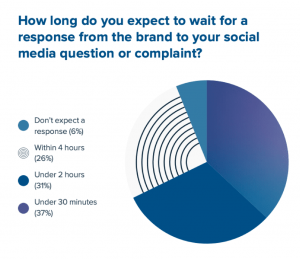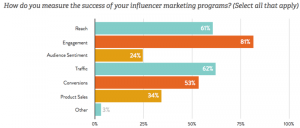— July 30, 2019
The Western idea of intuition is based on the concept that some information can be acquired without reason or observation: a gut feeling or a sixth sense that makes the person experiencing intuition feel one way or another.
For example, “I had an intuition he was a liar,” or “I felt that would be the right choice.” This is different from Japan, where they cultivate their inner intuitive voice as their primary method of reasoning. This requires mindfulness, awareness, presence, and an undistracted, meditative mindset developed over one’s lifetime.
The Value of Intuition
I think we in the West look down on intuition because it is difficult to quantify. In the movie As Good as it Gets, Jack Nicholson’s character is asked how he writes women so well, and his response is, “I think of a man, and I take away reason and accountability.” A woman’s intuition is spoken of negatively in the West, and I don’t think we respect it for serious matters. Intuition gets looked down on as being unreliable and lesser than analytical reasoning.
To be clear, in general, Western women reason in a linear manner. Compared to Western men, however, Western women tend to be more in tune with their feelings and intuitions. The conclusions based on this kind of knowledge are deemed less reliable than cold hard facts and logic. In my experience, this is one of the reasons women are underrepresented in Western STEM (science, technology, engineering, and math) classes, the finance industry, and upper-level corporate management. It is based on bias and not on ability. And I believe this bias is a key reason that a country like Pakistan has had a female leader, but the apparently more advanced, more progressive, and more open-minded United States has yet to elect a woman president.
Steve Jobs helped to change this mindset somewhat through his success. I consider him a hybrid of sorts: a Western-trained, linear thinker with Western abstract creativity that was able to learn intuitive thinking and a Zen-like pursuit of perfection and apply that to his work. College friend Steve Kottke described Steve Jobs saying, “Steve is very much Zen. It was a deep influence. You could see it in his whole approach of stark, minimalist aesthetics, intense focus.”[1]
In his famous Stanford commencement address, Jobs gave some very Zen advice: “Your time is limited, so don’t waste it living someone else’s life. Don’t be trapped by dogma—which is living with the results of someone else’s thinking. Don’t let the noise of others’ opinions drown out your own inner voice. And most important, have the courage to follow your heart and intuition. They somehow already know what you want to become. Everything else is secondary.”[2] (Emphasis mine)
Steve Jobs’ accomplishments show how powerful intuitive reasoning can be even in the hypercompetitive Western business environment. It shows that linear analytical reasoning is not the only path to success and that intuitive reasoning can play an important role in our private as well as professional lives. Jonas Salk, who discovered the first effective polio vaccine, had a great quote: “Intuition will tell the thinking mind where to look next.”
I believe it is a shortcoming in Western culture that we do not properly value intuition.
It has been my observation that the Japanese do value intuition, or a mindful and meditative reasoning process developed over long periods of time that relies not only on conscious awareness, but also taps into the power of the subconscious mind. They do not use intuition just for simple decisions and for quick judgments on how they feel about something.
The Japanese cultivate their intuition. They will focus on a single discipline for years or even decades, and out of that mastery, develop a deep intuitive understanding of a subject, much like how a chess master can develop an intuitive understanding of how to win a chess match without necessarily having the ability to logically explain each move in advance. Intuitive understanding takes years of intensive focus to develop and the Japanese cultivate intuition for their form of analysis and reasoning in contrast to the linear logic of the West. This difference in perspective highlights two key areas of potential misunderstanding: the Japanese are not creative, and the Japanese are robot-like in their thinking; logical, but without feeling.
Skilled Innovation
It is my opinion that the Japanese are not creative, but that they are fantastic innovators. To be creative, by definition, is to bring about something new that did not exist before. If something did not exist, then it would have to start off as an abstract idea. As the Japanese mind views the world literally, the Japanese tend not to be good at abstract thinking. Therefore, the Japanese have not been very successful in creating new things.
To wit: Japan had the world’s second-largest economy before China recently surpassed them. Japan spent enormous sums of money on research and development both in the government and private sectors. Yet, the only big inventions to have come out of Japan over the past few decades have been the Walkman, ink-jet printing, the floppy disk, and LED lights. Note, these have nothing to do with the internet, machine learning, big data, the cloud, artificial intelligence, or any other part of the new economy.
Innovation, on the other hand, is very different from creativity. Innovation is taking something that already exists and making it better. The Japanese are fantastic at innovation. Early in Japan’s development, they were known for low-quality knock-offs. Later, in the 1970s and 1980s, Japan started to get recognized for making superior quality, innovative products. Japanese TVs and cars took the world by storm, as they were coveted for their high quality, durability, and reasonable prices. Japanese innovation was based on continuous small improvements. For example, Japanese machining on auto parts became so precise, US auto companies didn’t have measuring equipment sensitive enough to detect the difference between US and Japanese parts.
Westerners often hold the view that the Japanese workforce operates as unfeeling, robot-like worker ants. According to this stereotype, the rote education system of Japan didn’t teach workers how to think. Japanese workers were successful at building cars or robots or high-speed trains because of superior dedication and their robot-like work ethic. What is interesting today is that despite the competition from Korea and China, who by hook and by crook are imitating or stealing any technology they can get their hands on, Japan still retains an edge in certain areas. What accounts for this difference? Intuition-based craftsmanship.
The front portion of a Japanese bullet train is made by hand. The gears from Japan’s global leading high-end bicycle gear company are made by a couple of older craftsmen who work by hand and are the main bottlenecks in their manufacturing process. The production process of Japanese machine tools, the integration of parts into a Japanese hydraulic excavator or diesel engine, the material science in Japanese industrial motors, and the manufacture of small-sized robotic gears are all done by craftsmen. Their work is extremely difficult to imitate as Japanese production is art as much as science.
Far from being robotic, it is precisely the emphasis on using the intuitive part of the mind, the part that a computer cannot imitate, that makes Japanese companies so competitive at advanced manufacturing.
In an example of intuitive thinking in Japanese craftsmanship, Hajime Nakamura explains in the book Ways of Thinking of Eastern Peoples: “In the history of technology also the Japanese people have valued and still value intuitive perception (kan) more than scientific inferences based on postulational thinking.” The Japanese emphasize one’s judgment of craftsmanship over formulaic production methods. For example, Japanese swordsmiths never recorded the precise temperature for the water that quenched the red-hot steel. “Thus,” Nakamura writes, “this temperature has been transmitted from master to disciple, as a secret which must be understood only through intuition.”[3]
Today, Japan houses the only company in the world that can produce a nuclear core reactor vessel as a single unit with no welds. They produce it from a giant 600-ton ingot. This is as much art as science. If it were strictly science, the Chinese or Koreans could copy it. The material science behind this feat is based upon metallurgy know-how developed by this company centuries ago in the art of forging samurai swords.
I would like to emphasize that I’m speaking about tendencies. Japanese people tend to be literal-intuitive thinkers. But there are exceptions. Shigeru Miyamoto at Nintendo created Donkey Kong, Mario Brothers, Legend of Zelda, etc. Satoshi Tajiri, also at Nintendo, created Pokémon. These two are undoubtedly creative and are definitely capable of abstract thought. But I would emphasize that these two are great exceptions in Japan.
In summary, the Japanese are not good abstract thinkers, so they are not creative. They are, however, excellent innovators and through focused, intuition-driven thinking using processes that are as much art as science; the Japanese take existing products and improve on them.
The subconscious mind processes copious amounts of information beyond the scope of the conscious mind. An intense focus and a calm, effortless, and meditative mind-set better allows us to access insights developed subconsciously.
***
For more advice on cultural differences in American, Chinese, and Japanese thinking, you can find Culture Hacks: Deciphering Differences in American, Chinese, and Japanese Thinking on Amazon.
[1] Walter Isaacson, Steve Jobs.
[2] “‘You’ve Got to Find What You Love,’ Jobs Says,” Stanford University, June 14, 2005, http://news.stanford.edu/2005/06/14/jobs-061505/.
[3] Hajime Nakamura, Ways of Thinking of Eastern Peoples (Honolulu: University of Hawaii Press, 1968), 575.
Business & Finance Articles on Business 2 Community
(21)







